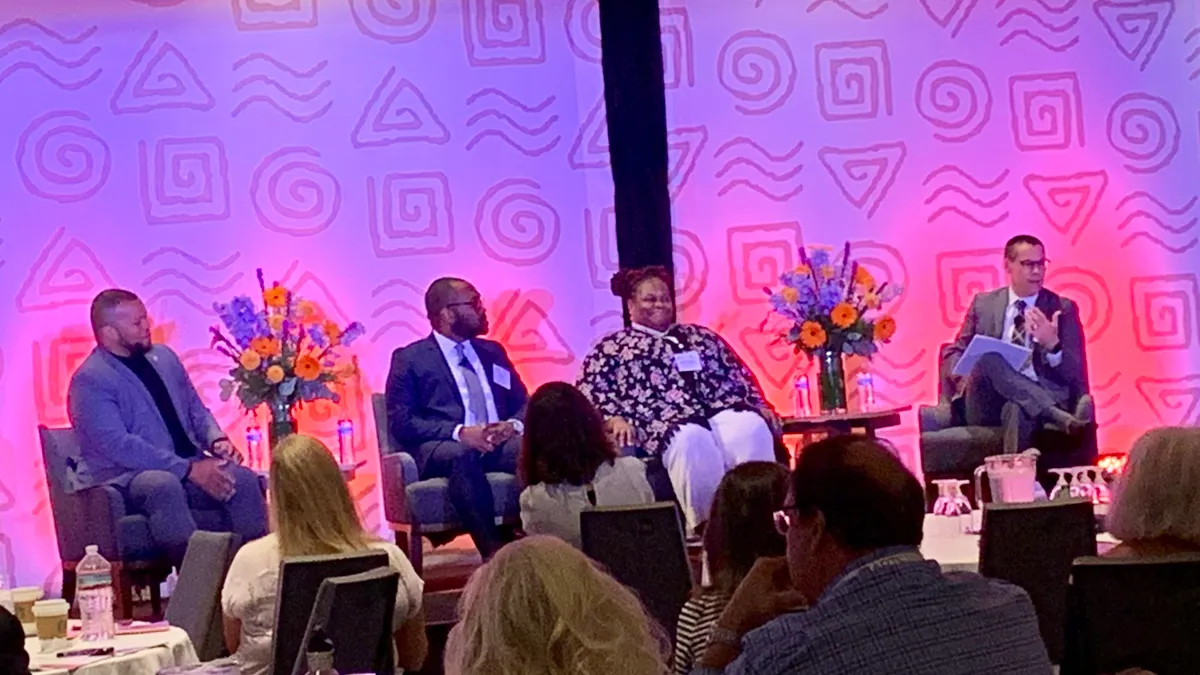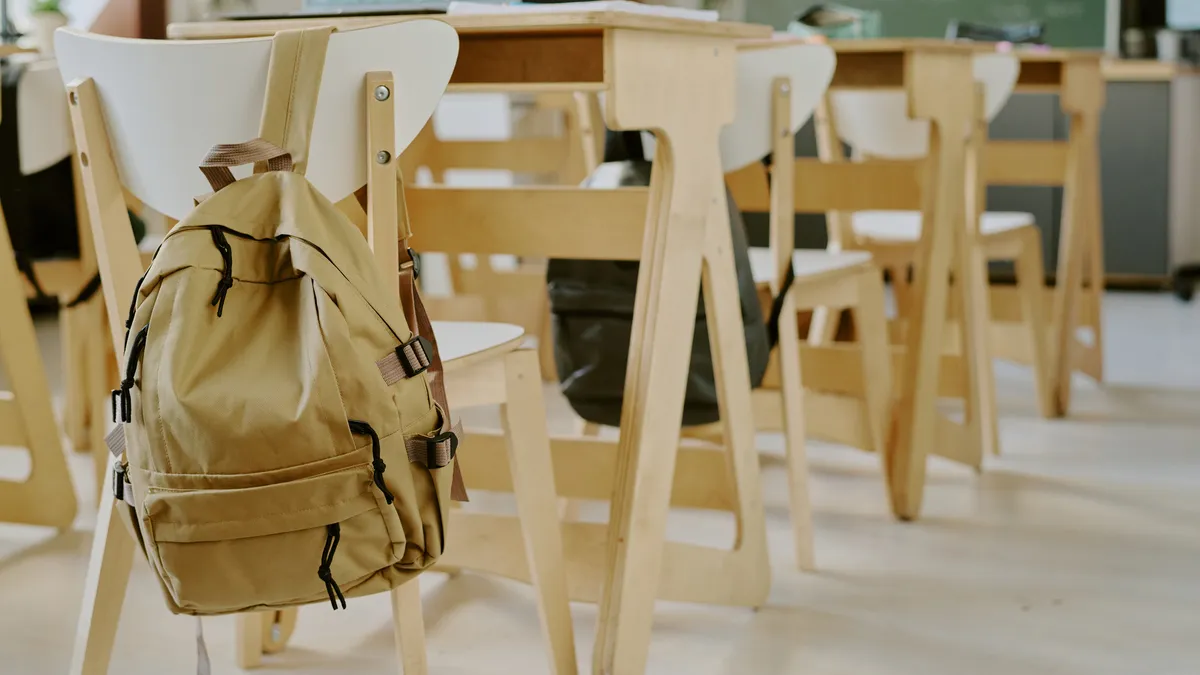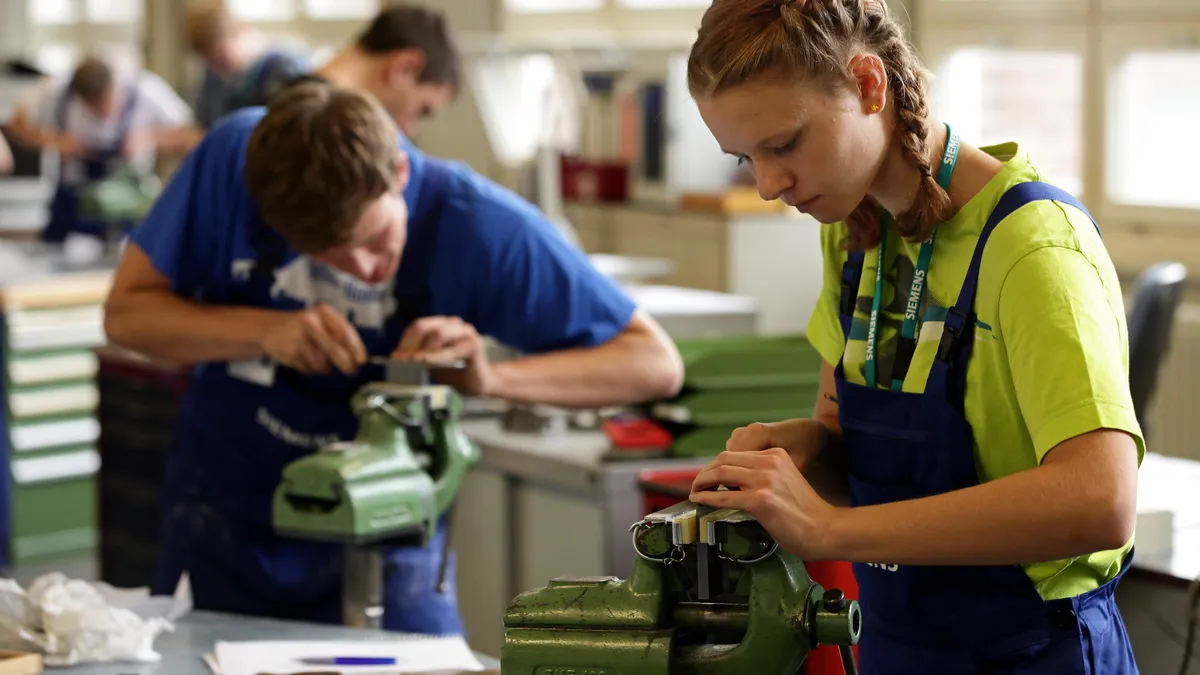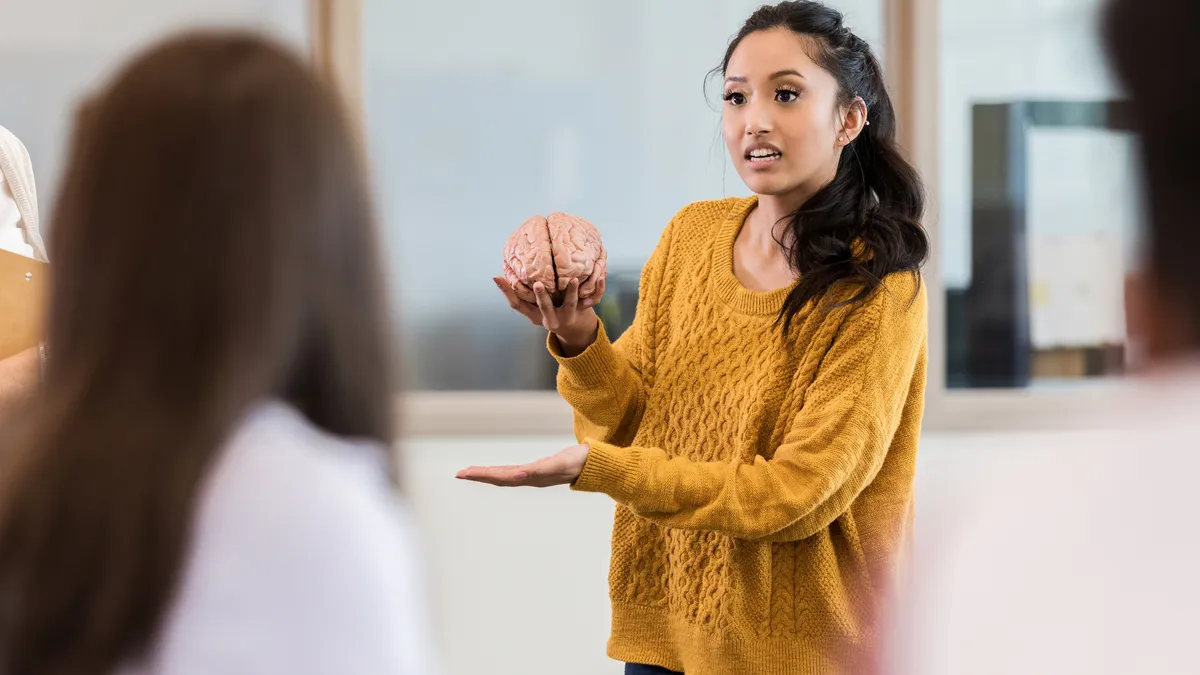ALEXANDRIA, Virginia — When Nettrice Gaskins was teaching at the Boston Arts Academy, she was asked to teach an Advanced Placement computer science course. But she was at the school to run a new STEAM lab, blending the arts into science, technology, engineering and math instruction.
So she pitched the idea of teaching an arts-based computer science course to The College Board, and they agreed. The unique approach led to students composing music to data and a student creating a video on the connections between jazz improvisation and quantum physics — specifically the work of John Coltrane.
“They were all trying to apply their practice to that particular unit in ways that I hadn’t thought of myself,” Gaskins said Wednesday during a morning session at this year’s gathering of the Arts Education Partnership (AEP). "Students should be able to follow into music even though they are doing data analysis.”
Now the content manager for the Fab Foundation and an adjunct at Massachusetts College of Art and Design, Gaskins shared her approach to starting with aspects of culture when designing lessons and activities for students. Inspired by the culture of Bhutan, for example, she described connections between the importance of sewing among Bhutanese people and the principles involved in fabrication, such as 3D printing.
In addition, it’s the “lived experiences of students” that separate STEAM from arts integration, added Marvin Carr, a senior advisor for STEM and community relations with the Institute of Museum and Library Services. Dancers, for example, bring a useful perspective to the field of robotics because of their understanding of how the body moves. And the “camaraderie that comes with music” is the same type of collaboration that is needed in an engineering lab, he said.
The session also focused on the partnerships necessary to support STEAM in schools, such as the year-long STEAM program Crystal Bridges Museum of Art in Bentonville, Arkansas, provides for the region’s 5th-graders, which includes a field trip to the museum, but also a workbook full of activities to make connections back to the works of art they viewed.
“Rural communities are lacking cultural institutions,” said Nile Blunt, the head of school programs for Crystal Bridges. “When you find out where those gaps are, hopefully there is a cultural institution that can pick up the slack.”
Carr added that when seeking funding for such partnerships, he tends to focus on the potential for STEAM to prepare a more competitive workforce, and not as much on the students’ personal growth, engagement and academic success.
One challenge is that the “arts integration world lacks the research base that the classic STEM world has,” he said. “There needs to be a concerted effort in producing more scholarly research.”
'Additional access points'
As a lead-in to the opening session, Jeremy Anderson, president of the Education Commission of the States, which houses AEP, posed several questions that state lawmakers and policymakers might ask about STEAM. One was why one more letter should be added to the STEM acronym.
The arts provide “additional access points for students to observe, define and articulate the problems they experience in their lives,” answered Mary Dell’Erba, senior project manager with AEP and the author of a recent report on STEAM.
Another was why schools would want students who are “divergent thinkers.” Dell’Erba responded that creative ideas are what contributes to innovation in the workforce.
South Carolina is one state where policymakers are focused on the role of schools in workforce preparation, Kim Wilson, the executive director of the Arts in Basic Curriculum (ABC) Project, explained in a morning breakout session.
The state’s “profile of a graduate,” developed by the influential South Carolina Council on Competitiveness, she said, includes creativity and innovation as important skills, but the state is not measuring the impact of the arts in any way.
“We know the power of arts education,” she said. “The challenge is how do we measure that influence.”
To provide state leaders with concrete data, the ABC Project worked with the South Carolina Arts Commission to examine the results of Gallup Student Poll data from 30 “arts-rich” schools in the state. Focusing on questions regarding engagement and hope, the data showed that students in the arts-focused schools outscored national averages in engagement — 54% compared to 47% — and in hope, 46% to 43%.
"We still have a long way to go," said Ashley Brown, the commission's arts education director, adding that they also saw that the longer a school has emphasized the arts, the more likely to respond positively to questions about engagement. "We’re thinking, 'We know this works; how do we apply this in the real world?'"
Expanding the Gallup study to 20 more schools, Brown added that they will also look at the impact of having an arts-rich school on teachers, such as their involvement in decision making.
As part of a pilot program, the opportunities in the arts have also been added to the state's Read to Succeed summer camp for 3rd-graders who are reading below grade level.
After three years in Williamsburg County, they found students who had a drama component to their camp maintained or increased their reading level, increased scores on a measure of divergent thinking and reported being more motivated to read. Those in the control group, without the drama activities, decreased in divergent thinking and motivation to read.
"The numbers are telling us that this is working," Brown said. "The needle — it may be slow, but it is moving."
Having data on the academic benefits of the arts has been "helpful in our conversations with those communities and entities that are assigned to accountability," Wilson said. Arts education advocates also saw $615,000 added for arts in the state education budget passed earlier this year.
Brown added that her group is also now having a voice in the state's plan for the Every Student Succeeds Act. "That would have never happened," she said, "if we hadn’t had some real data to back up what we were talking about."
Translating to 'skills in the workplace'
Most people are familiar with the Virginia is for Lovers travel slogan. Virginia is for Learners is a campaign to emphasize the strengths of the state's education system, James Lane — who introduced himself as a "band director who gets to be state superintendent" said during a Wednesday keynote.
A trumpet player who has traveled with bands since he was in high school, Lane discussed the many ways that arts enhance student learning and development. One is by building teamwork and leadership, he said, adding that he learned at 15 in the marching band that leadership is not about telling someone to do something. It's about inspiring a student to want to play a piece — or do anything else — correctly.
Arts also support emotional intelligence and empathy, Lane said, describing how jazz musicians, being freelancers, often play with different musicians every night, and that he was also exposed to a variety of musical genres.
"It allowed us to learn so much from each other," he said, "and everyone brought a different flair."
Musicians have to memorize pieces of music, which builds cognitive skills, he said. Playing in clubs for hours each night thought him "confidence and thinking on my toes, which is an incredible skill in the workplace."
Finally, he highlighted how arts educators can teach those in other content areas a few things.
"We were doing performance assessment before performance assessments were cool," Lane said. "There is no way you are going to learn how to play your instrument by writing your skills down."






















